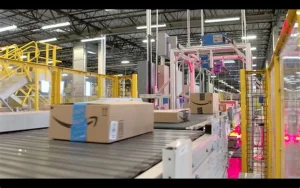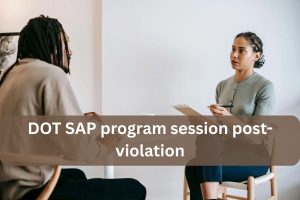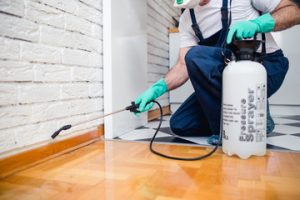A simple surface change can transform an entire space. Cabinet refinishing is one of those subtle yet powerful upgrades that can breathe new life into interiors without the need for complete renovation. It is a craft that blends artistry with technique, turning old, worn cabinetry into a statement of style and sophistication. More than a cost-effective alternative to replacement, refinishing is a sustainable solution that embraces creativity while preserving function.

At its core, cabinet refinishing is about renewal. It involves stripping away old finishes, preparing surfaces, and applying new coatings to achieve a refreshed appearance. While the process may sound straightforward, the results depend on precision, patience, and an understanding of materials. It is not merely a cosmetic change but a transformation that can redefine the character and atmosphere of a room. Contact Cabinet Refinishing Modesto for professional help.
One of the most compelling reasons homeowners and designers choose refinishing is sustainability. Instead of discarding perfectly functional cabinets, refinishing extends their lifespan and reduces waste. This approach minimizes the environmental impact associated with manufacturing and transporting new cabinetry. By reimagining existing materials, refinishing contributes to a circular economy where beauty and responsibility coexist.
The science behind refinishing is rooted in surface preparation. Before any finish is applied, cabinets must be meticulously cleaned, sanded, and sometimes repaired. Removing layers of grime, grease, and old coatings ensures that the new finish adheres properly and lasts longer. This phase requires attention to detail, as even minor imperfections can affect the final appearance and durability.
Once the surface is prepared, the creative possibilities begin. Color selection is one of the most transformative aspects of cabinet refinishing. A dark, outdated kitchen can be brightened with soft neutrals, while a plain storage area can become a focal point with bold, dramatic tones. Finishes can be matte for understated elegance, glossy for modern appeal, or textured for depth and character. Each choice tells a story and sets the tone for the entire space.
Techniques have evolved beyond simple painting or staining. Modern refinishing often involves layering methods, such as glazing or distressing, to create depth and personality. These artistic approaches can mimic the patina of age, highlight architectural details, or introduce subtle contrasts that catch the eye. The result is cabinetry that feels custom-made, tailored to the homeowner’s aesthetic vision.
Beyond aesthetics, refinishing offers significant practical advantages. It is typically more affordable and less disruptive than full cabinet replacement, which often involves demolition, construction, and extended downtime. Refinishing projects can often be completed in a fraction of the time, allowing spaces to be enjoyed sooner. For many, this balance of cost, convenience, and impact makes refinishing an ideal choice.
Durability is another crucial factor. When done correctly, a refinished cabinet surface can withstand years of use and exposure to daily wear. Advanced sealants and protective coatings enhance resistance to moisture, heat, and scratches. These innovations make refinished cabinets not only beautiful but also resilient, combining aesthetic appeal with functional performance.
Lighting and space perception can also be influenced by cabinet refinishing. Lighter finishes can make small kitchens or bathrooms feel more open and airy, while deeper tones can add warmth and intimacy to larger rooms. The right finish can accentuate natural light, complement architectural features, and create visual harmony. This strategic use of color and texture transforms cabinetry into an active design element rather than a passive background feature.
The refinishing process also allows for personalization. Homeowners can integrate subtle design elements such as contrasting interiors, custom hardware finishes, or unique surface treatments. This level of customization ensures that the cabinetry aligns with the overall design narrative of the home. It is an opportunity to imprint personality into the space while retaining the structure that already exists.
In commercial settings, cabinet refinishing plays an equally important role. Businesses often seek to refresh their interiors without disrupting operations or exceeding budgets. Refinishing allows for quick aesthetic updates that reflect brand identity and improve customer experience. Whether in retail, hospitality, or office environments, refinished cabinetry can elevate professional spaces with minimal downtime.
Technological advancements have also reshaped how refinishing is done. Eco-friendly finishes with low volatile organic compounds provide healthier indoor air quality. New surface bonding agents improve adhesion and extend the lifespan of finishes. Even application tools and techniques have become more sophisticated, allowing for smoother finishes and more precise detailing. These innovations reflect the evolving standards of quality and performance in the field.
Maintenance plays a significant role in preserving the beauty of refinished cabinets. Regular cleaning with gentle products and avoiding abrasive materials can prevent premature wear. Proper care ensures that the finish retains its luster and protective properties over time. This ongoing attention transforms refinishing from a one-time project into a lasting investment.
The growing popularity of cabinet refinishing also speaks to a broader cultural shift. Homeowners are increasingly seeking ways to blend tradition with innovation, functionality with beauty, and sustainability with luxury. Refinishing embodies this balance, offering a solution that honors existing craftsmanship while embracing modern design sensibilities. It demonstrates that renewal does not always require replacement.
Moreover, cabinet refinishing aligns perfectly with the principles of adaptive reuse and mindful consumption. In a world where resources are finite and environmental concerns are mounting, reimagining what we already have becomes an act of creativity and responsibility. Refinishing proves that transformation is possible without excess, and that beauty can emerge from what once seemed outdated.
As design trends evolve, so do refinishing styles. Natural wood grains are making a comeback, often paired with contemporary hardware for a timeless-meets-modern look. Minimalist finishes emphasize clean lines and simplicity, while eclectic approaches embrace bold contrasts and unexpected color palettes. The versatility of refinishing ensures it remains relevant, adapting to changing tastes and design philosophies.
Looking to the future, cabinet refinishing will likely continue to innovate in materials, techniques, and sustainability practices. Emerging technologies such as nanocoatings may offer even greater durability, while 3D printing could introduce new possibilities for custom finishes and detailing. As homes become smarter and more efficient, refinished cabinetry will evolve to complement these advancements seamlessly.
Ultimately, cabinet refinishing is more than a renovation technique—it is an art form that celebrates transformation. It respects the craftsmanship of the past while embracing the possibilities of the future. It offers a way to refresh spaces without erasing their history, to create beauty without unnecessary waste, and to achieve luxury without excess.
In every stroke of paint, every layer of stain, and every polished surface, there is a story of renewal. Cabinet refinishing invites us to look beyond the surface and see the potential hidden in what we already have. It is proof that with creativity, care, and craftsmanship, even the most ordinary elements of a home can be reborn into something extraordinary. Through this blend of art and science, cabinet refinishing continues to redefine the way we think about design, sustainability, and the spaces we call home.




